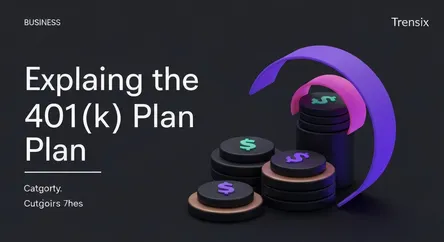Business
Explaining the 401(k) Plan

Learn about the 401(k), an employer-sponsored retirement savings plan that offers tax advantages and often includes employer matching contributions.
What is it?
A 401(k) is a retirement savings and investment plan offered by employers in the United States. Named after a section of the U.S. Internal Revenue Code, it allows eligible employees to save and invest for their own retirement on a tax-deferred basis. Contributions are deducted directly from an employee's paycheck before taxes are calculated, which can lower their current taxable income. A key feature is the potential for an employer 'match,' where the company contributes to the employee's account, often up to a certain percentage of their salary. The funds are typically invested in a portfolio of mutual funds chosen by the employee.
Why is it trending?
With the decline of traditional pension plans, the 401(k) has become the primary retirement vehicle for millions. It's a constant topic of discussion due to economic shifts, market volatility, and changing regulations. In times of inflation and economic uncertainty, people become more focused on securing their financial future, leading to increased interest in maximizing their 401(k) contributions and understanding their investment options. Financial literacy trends and social media have also made complex topics like retirement planning more accessible and widely discussed among younger generations.
How does it affect people?
The 401(k) profoundly affects personal financial security. For many, it's the largest asset they will have besides their home. The combination of pre-tax contributions, tax-deferred growth, and employer matching can significantly accelerate wealth accumulation for retirement. However, it also shifts the responsibility of saving and investing from the employer to the individual. This means people must be proactive in managing their accounts, choosing appropriate investments, and understanding the risks involved to ensure they have adequate funds for their later years. Poor management can lead to a significant shortfall in retirement savings.